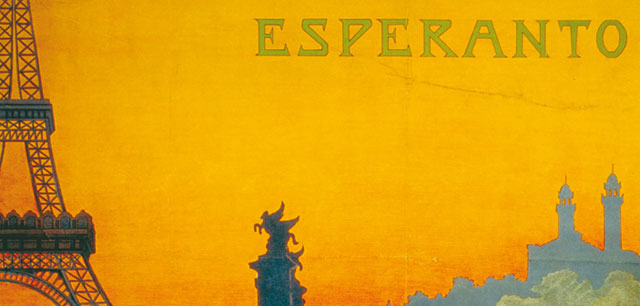Location
Palais Mollard, Herrengasse 9, 1010 Vienna
esperanto@onb.ac.at
Opening Hours
Kolekto de Planlingvoj: Planned languages are an important facet of human creativity. They are objects of study for that branch of scholarship that has been called interlinguistics since the first half of the 20th century. The Department of Planned Languages houses the world’s greatest specialist library on interlinguistics. Almost 500 planned languages are documented, of which the most important are Esperanto and Interlingua.
As the result of continual collecting for over 80 years, today the Department of Planned Languages, founded in 1927, looks after 35,000 printed volumes, 2,500 magazines, 3,000 museum objects, 2,000 scripts and manuscripts, 23,000 photos, and 40,000 leaflets.
The main focus of the collection is on Esperanto, the planned language launched in 1887 by the Polish eye doctor Ludwik L. Zamenhof. In the course of time it has developed into a fully fledged language and is today used by some millions of people.
In addition the Department documents unconventional attempts to solve the language problem, such as the revival of classical languages. Thanks to modern communication technology Latin, for example, is enjoying an unexpected popularity as an international means of understanding via the internet. The same can be said for classical Greek, which has never really ceased being a living language.
Nor are we without the newest languages such as Klingon, the space language from the TV cult series „Star Trek“, the joke language Starckdeutsch, or the very seriously intended project Neuslavisch, which had the goal of reducing the language chaos in the Danube Monarchy.
The Department also conserves several important post mortem and lifetime bequests, such as the bequest of Eugen Wüster, the founder of international terminological work, and of the Catalan-Portuguese author Manuel de Seabra.
Adjacent to the Department is the Esperanto Museum of the Austrian National Library, which presents the up-and-down history of Esperanto by means of modern library techniques.
Catalogues
Search the catalogues of the Department of Planned Languages

